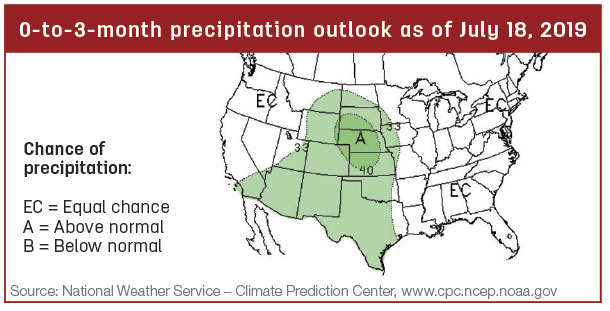Oversupplementing reduces profitability, and undersupplementing can lead to lower cow body condition scores, reduced pregnancy rates and, ultimately, fewer calves to sell.
It is best to let the hay cure for at least a week before taking samples. When collecting hay samples, randomly sample approximately 10% of the bales from each cutting or load using a hay probe and and be sure to make a composite for each cutting.
Just as an example, if you made three cuttings of hay, you would want to develop a composite for each cutting and then send those three composites to the lab.
At minimum, hay should be analyzed for crude protein (CP) and total digestible nutrients (TDN); TDN is one way to describe the energy content of the hay. While the CP content is important, a good estimate of TDN is as important and, in most cases, more important than CP. This is where hay testing gets a little more complicated because TDN can’t be measured directly.

Two common methods used to estimate TDN are a regression equation that includes acid detergent fiber (ADF) or both ADF and CP, and a summative equation. Simply speaking, the summative equation calculates TDN by estimating the energy available from the CP fraction, neutral detergent fiber (NDF) fraction, non-fiber carbohydrates (NFC) fraction and crude fat fraction of the plant.
I won’t bore you with all the reasons why, but as a ruminant nutritionist I strongly recommend estimating TDN with a summative equation.
Two labs that calculate TDN using summative equations are the Dairy One Forage Lab in New York and Cumberland Valley Analytical Services in Pennsylvania. Additionally, both of these labs offer in vitro and NIR estimates of digestible NDF. The NDF fraction represents the largest source of energy in most hay samples, and digestibility can vary considerably among samples.
Before sending samples to a testing lab, always visit with the ruminant nutritionist or industry professional who will help develop your supplementation program to determine what lab the nutritionist recommends and what tests are appropriate for your samples.
This is important because the appropriate tests may change depending on the forage sample being analyzed. ![]()

-
Jason Banta
- Associate Professor and Extension Beef Cattle Specialist
- Texas A&M University
- Email Jason Banta








